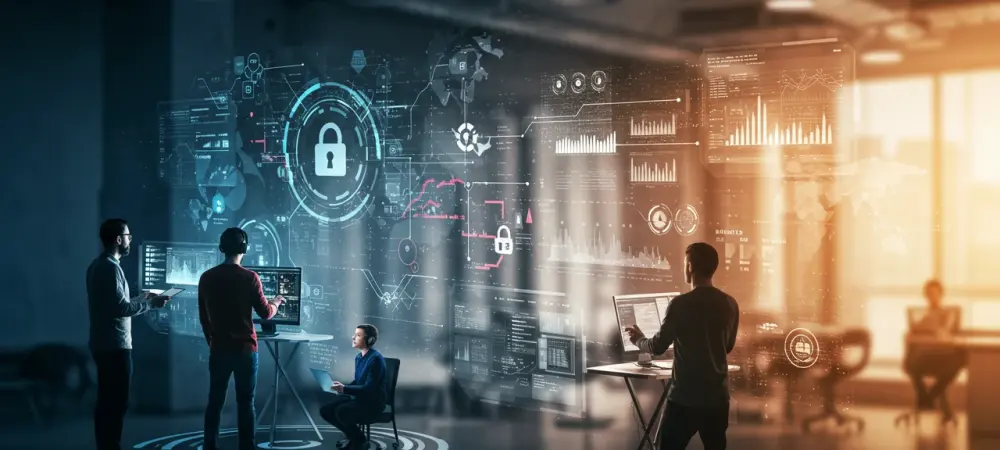In an era where digital threats are increasingly sophisticated and pervasive, Remote Monitoring and Management (RMM) tools have emerged as both a boon for IT operations and a battleground for cybersecurity. These tools, which enable IT professionals to manage systems remotely, turn their advantages into vulnerabilities when exploited by cybercriminals. Their dual-use nature makes them attractive targets, as they can be deftly manipulated to gain unauthorized access to systems. Understanding the current trends in their exploitation, expert insights, and potential future developments is crucial for staying ahead in this rapidly evolving landscape.
Current Trends in RMM Tool Exploitation
Overview of RMM Tool Usage and Vulnerabilities
RMM tools like ScreenConnect, UltraVNC, and Atera are widely adopted across industries due to their efficiency in remote operations. However, this widespread use has led to increased vulnerability. According to recent cybersecurity reports, the growth in RMM usage is paralleled by a rise in incidents where these tools are exploited. The flexibility and accessibility that make RMM tools invaluable for IT support also render them susceptible, as threat actors harness their capabilities for malicious activities.
Statistics reveal a concerning trend; the incidents of RMM tool misuse have risen sharply, underscoring the urgency for more robust security measures. Organizations that heavily rely on these tools find themselves at a crossroads, navigating between operational efficiency and the need to bolster defenses against potential infiltration.
Case Studies of RMM Tool Exploitation
Real-world cases exemplify the potential devastation caused by the exploitation of RMM tools. Notable companies have fallen victim to such strategies, where attackers leverage tools like ScreenConnect and UltraVNC by mimicking legitimate operations, often through intricately crafted phishing campaigns. For instance, recent incidents involved attackers using these tools to deploy malware, bypassing traditional security measures and gaining remote control over systems. These case studies highlight not only the technical ingenuity of threat actors but also the pressing need for organizations to cultivate a deeper understanding of how their tools may be used against them. The ramifications extend beyond financial loss, affecting reputation and trust, which are vital in a data-driven world.
Expert Insights on Cyber Threats and RMM Tools
Engaging with cybersecurity experts provides invaluable insights into the challenges and implications of RMM tool threats. Experts emphasize the significance of these risks, noting that while the tools are indispensable for remote IT management, their potential misuse poses a severe security challenge. They highlight common mistakes organizations make, such as insufficient monitoring and reliance on outdated security measures, which can lead to catastrophic breaches.
Industry leaders stress the importance of a proactive approach, advocating for regular audits and updates to security protocols. By staying informed and adaptive, organizations can mitigate risks and reinforce their defenses, ensuring RMM tools remain an asset rather than a liability.
Future Outlook on RMM Tools and Cybersecurity
The landscape for RMM tools and cybersecurity is dynamic, with developments in technology promising both opportunities and hurdles. As tools evolve, they may incorporate more advanced security features, potentially reducing the risk of exploitation. However, the sophistication of cyber threats is expected to grow as well, posing ongoing challenges for industries reliant on these tools.
Predictions for the future present a spectrum of scenarios, from optimistic views of heightened security engagement and innovative defense mechanisms to more pessimistic expectations of increasingly complex threats. Regardless, industries must remain vigilant, continuously aligning their strategies with the changing technological environment to safeguard their operations effectively.
Conclusion and Actionable Insights
Reflecting on the discussion of cybersecurity threats in RMM tools reveals crucial insights and necessary actions for organizations. Recognizing the dual threat and benefit of these tools, it is imperative to adopt comprehensive security frameworks that address potential vulnerabilities. Organizations are encouraged to embrace advanced threat detection solutions and foster a culture of continuous education among staff about evolving cyber threats. By anticipating the challenges and integrating innovative practices, industries can protect their valuable digital assets and maintain resilience in the face of future cyber adversities.

